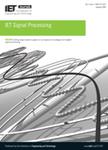版权所有:内蒙古大学图书馆 技术提供:维普资讯• 智图
内蒙古自治区呼和浩特市赛罕区大学西街235号 邮编: 010021

作者机构:Indian Inst Technol Madras Dept Appl Mech Noninvas Imaging & Diagnost Lab Biomed Engn Grp Chennai Tamil Nadu India Natl Inst Technol Tiruchirappalli Dept Instrumentat & Control Engn Physiol Measurements & Instrumentat Lab Tiruchirappalli India
出 版 物:《IET SIGNAL PROCESSING》 (IET Signal Proc.)
年 卷 期:2020年第14卷第10期
页 面:745-753页
核心收录:
主 题:fatigue medical signal processing biomechanics electromyography feature extraction muscle dynamic condition significant complexity features fatigue conditions variational mode decomposition based differentiation surface electromyography signals automated muscle fatigue detection system variational mode decomposition features sEMG signals random forest classifier 103 healthy volunteers 45 subjects dynamic muscle fatiguing contractions 58 subjects band-limited intrinsic mode functions BLIMF fatigue segments VMD algorithm hjorth features mobility leave-one-subject-out cross-validation complexity feature dynamic contractions isometric contractions
摘 要:Surface electromyography (sEMG) signals are stochastic, multicomponent and non-stationary, and therefore their interpretation is challenging. In this study, an attempt has been made to develop an automated muscle fatigue detection system using variational mode decomposition (VMD) features of sEMG signals and random forest classifier. The sEMG signals are acquired from 103 healthy volunteers during isometric (45 subjects) and dynamic (58 subjects) muscle fatiguing contractions and preprocessed. The band-limited intrinsic mode functions (BLIMFs) are extracted from non-fatigue and fatigue segments of the signals using the VMD algorithm. Hjorth features, such as activity, mobility and complexity are extracted from each BLIMF and are given to the random forest classifier. The performance of these features is evaluated using leave-one-subject-out cross-validation. The results show that the complexity feature performs better than others and it has resulted in an accuracy of 83% in dynamic contractions and 80% in isometric contractions. The performance is increased by about 8% in a dynamic condition when the most significant complexity features (p 0.001) are used and by about 12% for isometric when the authors use all significant features. Therefore, the proposed approach could be used to detect fatigue conditions in various neuromuscular activities and real-time monitoring in the workplace.